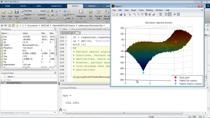Reduce Waste and Increase Efficiency with Process Optimization
Overview
Do you spend a lot of time manually planning your production schedule, optimizing process recipes or minimizing energy consumption and waste?
These tasks are not only tedious and occupy a significant amount of time, but are often impossible to solve optimally for humans. This can lead to large losses in efficiency and flexibility as well as wasted material.
Sarah Drewes, senior team lead consultant at MathWorks, will present how she worked together with engineers from Huber+Suhner to automate a complex scheduling task that led to significant savings of time and material. Additionally, Chris Lee will discuss two industry use cases from STIWA and HKM Steel, and show how these customers have achieved a significant ROI (Return on Investment) in their projects with support from MathWorks optimization experts.
Furthermore, Chyannie Fahdzyana will present an overview of how to formulate and solve several types of optimization problems in MATLAB®, and how to integrate optimization algorithms into a production environment.
Highlights
- Automate difficult decision-making tasks and save considerable time and money
- Realize your projects with support from MathWorks experts
- Learn about successes in industry projects
About the Presenters
Chyannie joined MathWorks this year as an application engineer and supports customers on language of technical computing. She received her PhD degree in Mechanical Engineering from the Eindhoven University of Technology (TU/e). Prior to joining Mathworks, she worked previously at 2getthere, a company that develops automated shuttle vehicles as a Control Software Engineer. Her interests include, but are not limited to, the intersection of optimization and control, AI, and intelligent systems.
Chris is the product manager for Optimization at MathWorks. He works with customers, field engineers, and the software development team to define new optimization capabilities and applications to serve the diverse industries where optimization is used, including aerospace and defense, automotive, energy, and manufacturing. Prior to MathWorks, Chris worked at Dassault Systèmes as a product manager for aerodynamic design optimization. He holds a Masters in Aerospace Engineering degree from the University of Toronto.
Sarah leads a team of consultants helping customers from various industries to get the maximum benefit from our MATLAB products family, focusing on analytics and optimization, as well as application design and software development. Sarah holds a diploma in Mathematics from Technical University Munich and a PhD from Technical University Darmstadt, specializing in mixed-integer optimization. Prior to joining MathWorks, she did research in operations research at the University of California, Berkeley, and then worked on network optimization for T-Systems GmbH.
Recorded: 1 Mar 2023




